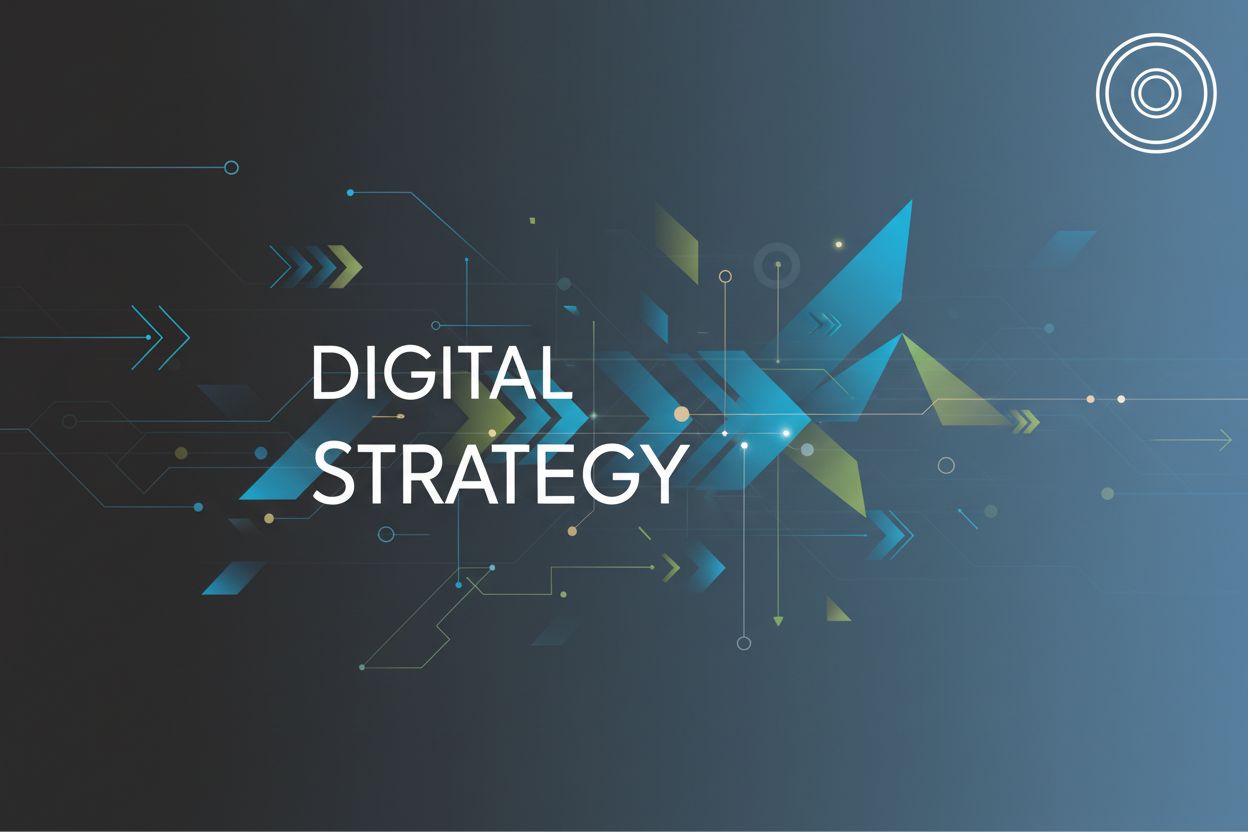Exploring the 5 P's of Marketing Framework
TL;DR
Understanding the Core of the 5 P's Framework
Okay, so you're diving into the 5 P's of Marketing, huh? It's a classic framework, but don't let that fool you; it's still super relevant. I mean, marketing is a wild west out there, and it's surprisingly easy to get lost in the weeds. The 5 P's? They're your compass, basically.
The 5 P's didn't just appear out of nowhere, y'know. It started with the 4 P's – Product, Price, Place, and Promotion – way back in the day. (The 4 Ps of Marketing: What They Are & How to Use Them ...) According to Marketer Milk, this concept dates all the way back to the 1940s. Then someone had the bright idea of adding "People," and honestly, it made all the difference.
Why? Because marketing isn't just about pushing products; it's about connecting with humans. And that "people" part? As Salespanel puts it, it includes your customers and your staff. Think about it: happy employees make for happy customers.
So, what are these magical P's anyway?
- Product: It's not just what you're sellin', but the whole shebang – design, packaging, even warranties, says Marketer Milk.
- Price: What customers are willing to pay, and how it stacks up against competitors. It is hard to find that sweet spot.
- Place: Where your customers find you, and how they get what they're buying. That's called distribution, if you didn't know.
- Promotion: How you shout it from the rooftops. From ads to influencer collabs.
- People: Like we said, the folks on your team and the folks you're trying to reach.
These five P's are supposed to work together, like a band of misfits in a heist movie. All of them need to be on the same page, and it all starts with knowing your audience, says Wild Creek Web Studio.
As we move on, we'll get into the nitty-gritty of each P, along with some practical examples, so you can get a better handle on how this framework works IRL.
Product Strategies in the Digital Age
Okay, so, you're thinking about your product in the digital world. It's not just about what you're selling, but how it fits into the whole online shebang, right? Let's get into it.
First things first: what makes your product special? It's your Unique Selling Proposition (USP), and it's gotta be clear, like, crystal clear. What problem are you solving that nobody else is? Identifying Your Product's Unique Selling Proposition (USP) is key in today’s online world, and fostering new ideas is crucial for developing and refining that USP. Companies need to have flexible plans for their products. They should focus on what users want and quickly adapt to new technology. It’s not enough for companies to just sell a product or service anymore. They must create complete experiences that connect with their target audience.
- Market Gaps: Find those holes in the market. What's missing? What are people really complaining about? For example, maybe the healthcare industry needs an easier way for patients to access their records on their phones. Boom, there's a gap.
- Compelling USP: Make it catchy, make it memorable. Your USP should scream, "This is why you need this."
- Communicate Effectively: Don't hide your USP! Slap it on your website, in your ads, all over the place.
Technology isn't just a "nice to have" anymore, it's table stakes. How can you weave digital magic into your product? I mean, even something as simple as adding a QR code to a physical product that links to how-to videos can seriously up your game.
- Digital Features: Think about integrating digital functionalities. Can your product connect to an api? Can it track data? Make it happen.
- Data Analytics: Use data to understand how people actually use your product. Are they getting stuck somewhere? Are they using a feature you didn't even realize was that cool? Adjust accordingly.
- Agile Development: Don't be afraid to tweak, change, and improve your product constantly.
People don't just buy products; they buy stories. What's the narrative around your product? Why does it matter?
- Emotional Connection: Tap into people's feelings. How does your product make them feel? Confident? Secure? Empowered?
- Highlight Benefits: Don't just list features. Explain how those features make life better.
- Brand Consistency: Keep your story straight across all channels – website, social media, ads.
So, you got your product, you've slapped some digital fairy dust on it, and you've got a killer story. Next up? Figuring out how much to charge.
Price Strategies for Competitive Advantage
Okay, so you've got a product that's ready to roll, but how much should you charge? Price isn't just a number; it's a statement about your brand and what you think you're worth.
Choosing the right pricing model can be tricky, but it is important. You got to consider what works now. For example, value-based pricing is about matching the price to what customers think your product is worth. A good way to approach the perceived value is to really understand your customer's pain points.
Then there's competitive pricing, where you peek at what competitors are charging and adjust your rates accordingly. Maybe you want to undercut them slightly, or perhaps you'll justify a higher price with extra features or better service, y'know?
Dynamic pricing is cool too. It's like how airlines change ticket prices based on demand. For example, surge pricing for ride-sharing apps during rush hour.
- Freemium models are another option, where you give away a basic version for free and charge for the premium stuff. This's a good way to get people hooked, right?
- Subscription models are great for recurring revenue. It works for anything from software to streaming services.
Price tags can mess with people's heads, honestly. Did you know that customers often see higher-priced items as better quality? This is due to the price-quality heuristic, where people subconsciously associate higher prices with better value. But you can also use psychological tricks, like ending prices in ".99" – known as charm pricing – to make them seem cheaper because our brains tend to focus on the leftmost digit. Crazy, huh? Discounts and promotions? Those are the dopamine hits that trigger impulse buys. But you got to use it sparingly!
Your pricing can make or break your brand image. A high price tag screams "luxury," while a low one suggests "budget-friendly." But it all needs to align with the value you're offering. Be straight with your customers about why you're charging what you're charging to earn their trust. As Fratzke Media mentions, "a product's price should reflect the value your customers see in it."
Next, let's talk about "place" – where your customers actually get your product.
Place Strategies for Maximum Reach
Alright, so where your product ends up being sold is a bigger deal than you might think. It's not just about slapping it on a shelf—it's about getting it in front of the right eyes, y'know?
Okay, so "Place" is all about getting your stuff where people can actually buy it. Think of it like this: you could have the coolest product ever, but if nobody can find it, what's the point? You need to think about how to get your product to your customer.
- Distribution Channels: Are you sellin' online, in stores, or both? It's gotta be seamless. For instance, some healthcare providers are using telemedicine and in-person clinics, giving patients options, right?
- E-commerce: Can't ignore the web, folks. Is your site easy to use on phones? Can people find it on Google? You need SEO, and you need it bad, says Wild Creek Web Studio. If your customer has a bad experience with the e-commerce site, that is lost revenue.
- Location-Based Marketing: If you got a brick-and-mortar store, you need to be where the people are!
Think about a local coffee shop. They might use mobile ads to draw in folks nearby, optimize their Google My Business listing, and maybe partner with nearby businesses, like the bookstore down the street, to cross-promote each other.
So, now that you've got your "place" sorted, it's time to shout it from the rooftops. How are you gonna get the word out? That's "Promotion," and we're diving in next.
Promotion Strategies in the Era of Digital Marketing
Alright, so you've got your product out there, the price is right, and folks know where to find it. Now, how do you make 'em want it? That's where promotion comes in – but it's not your grandpa's advertising anymore.
Digital marketing is a whole different ballgame. You can't just throw money at TV ads and hope for the best. You gotta be strategic, know who you're talkin' to, and speak their language.
- Clear Objectives: What do you actually want to achieve? More sales? More leads? More brand awareness? Nail that down first.
- Compelling Creatives: Your ads gotta grab attention, like, instantly. A/B testing is your friend here, folks! See what works, what doesn't, and tweak accordingly. For example, you might A/B test two different ad headlines to see which one gets more clicks, or try out different images to see which one resonates best with your audience. You can even use the data to predict who will be most likely to buy your product.
But don't ditch the old school stuff entirely, y'know? Traditional marketing can still pack a punch, especially when it's working hand-in-hand with your digital efforts.
- Drive Awareness: Use billboards or print ads to send folks to your website or social media. QR codes are your friend! It's like giving your product a digital passport.
Content is king, as they say, and a brand-first approach is the way to go. A cohesive brand message is going to help you stand out from the crowd.
- Brand strategy is one of the most important things you can do to help you grow. If you don't know what you are trying to say, there is no way that your audience will know.
Next up, we're gonna talk about the most important P of all: People.
People Strategies for Building Customer Relationships
The 'People' P in the 5 P's framework recognizes that successful marketing hinges on understanding and engaging with both your internal team and your external customers. It's easy to think marketing is all about the shiny stuff, but honestly, it boils down to people. And how you treat 'em, of course.
First off, gotta train your team. I mean, really train them. Not just product knowledge, but how to handle tricky customers, how to listen, y'know? Employees who feel empowered to solve problems? They're gold!
- For example, consider how a healthcare provider might train staff to handle sensitive patient inquiries with empathy and efficiency. The goal is to ensure every interaction reinforces trust and care.
- In the retail sector, this could mean empowering employees to offer immediate discounts or freebies to resolve complaints on the spot.
Next, customer feedback. Don't just collect it; use it. Set up systems to grab feedback from all angles – surveys, social media, even those old-school comment cards.
A 2023 study highlights the importance of actively seeking and responding to customer feedback. Companies that do so experience a 24% higher customer retention rate https://www.qualtrics.com/blog/customer-feedback-statistics/. This increase is attributed to customers feeling heard and valued, leading to greater loyalty.
Then, act on it. Show customers you're listening. Make changes based on their suggestions, and tell them about it.
Finally, build a community. People want to connect, especially with brands they love. Create online spaces where they can chat, share ideas, and feel like they're part of something bigger.
- Think about a financial services company creating a forum where customers can discuss investment strategies or share personal finance tips with each other.
- A clothing brand might host regular meetups for loyal customers, offering exclusive previews and styling sessions.
It's all about showing you care, because at the end of the day, people buy from brands they trust, and trust comes from treating people right. If you nail the "people" part, the rest kinda falls into place.
Bringing It All Together: The Power of the 5 P's
So, we've journeyed through the 5 P's of Marketing: Product, Price, Place, Promotion, and People. It's easy to see each one as a separate puzzle piece, but the real magic happens when you see how they all fit together. Your Product needs to be something people want, your Price needs to reflect its value and be competitive, your Place needs to make it accessible, your Promotion needs to tell people about it, and crucially, your People – both your team and your customers – are at the heart of it all.
Think of it like a well-oiled machine. If one part is off, the whole thing sputters. A fantastic product with a terrible price won't fly. Great promotion for a product nobody can find? Pointless. And if your team isn't on board, or you're not listening to your customers, even the best strategy will crumble.
The 5 P's aren't just a checklist; they're a dynamic framework that helps you build a cohesive, customer-centric marketing strategy. By understanding and strategically aligning each P, you create a powerful, interconnected system that drives success. So, keep these five pillars in mind, and you'll be well on your way to navigating the marketing landscape with confidence.




